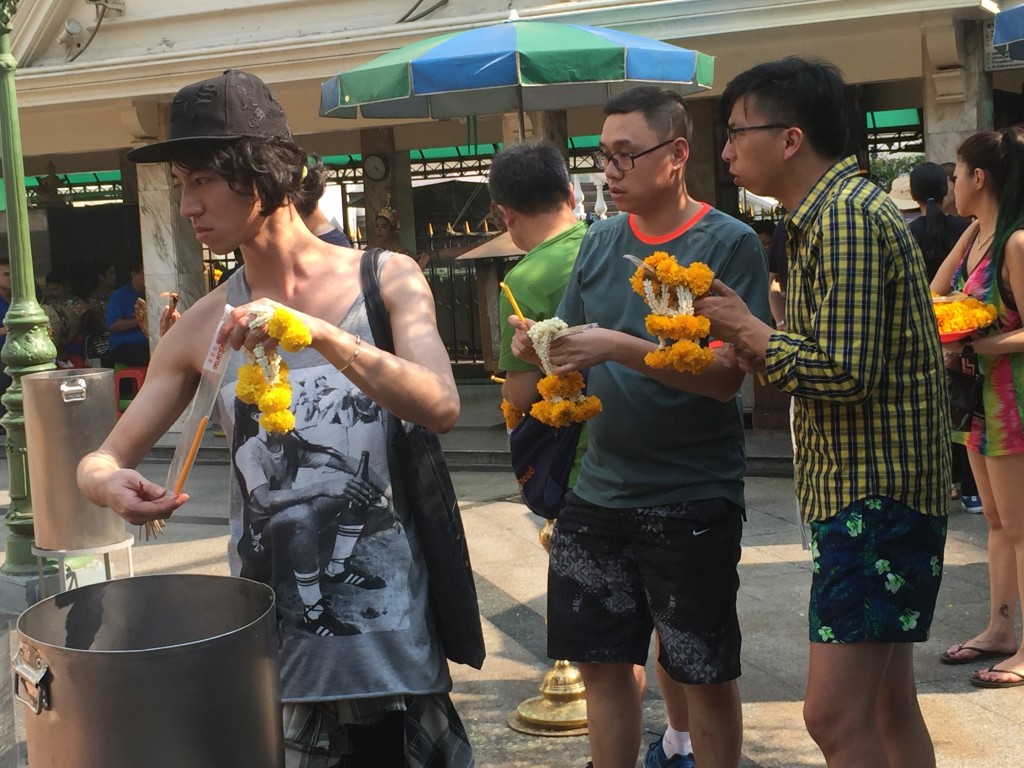Today I returned to the Erawan shrine in Bangkok to see how it had fared since last year’s bomb attack (that the Thai government refuses to call an act of “terrorism”). There was very little to remind anyone of the carnage last August. It was very much business as usual. I do feel for the Thai dancers, though. They surely have one of the most gruelling jobs — hours every day sending up prayers to the god through their dance and chants.
Tourists (I’m sure they are mostly tourists, Chinese and Japanese mostly) and the occasional local drop by to pay for a blessing or prayer; the more they pay the longer of more effective the prayer, I think. Pay little and maybe only two dancers will do their act; pay lots and you’ll get the full house. The number of musicians remains constant.
It looks to me like the prayer or blessing one pays for is written on a piece of paper and handed to a lead dancer so she is sure to say the right things and decide how many should accompany her.
And whenever they get a chance for a break they get those crowns off their heads very fast and make the most of their short breaks — checking iphones, having a smoke. It was very hot work and they looked like they were fast wearing down in between dances.
I suppose you could call it a service industry. Those earning the money are giving hope and comfort, not unlike western psychiatrists, astrologers and priests, perhaps.
I try to imagine what Jesus would want to cast out here. Surely he’d have pity on the tedium and low pay that the dancers and musicians so stoically endure. Perhaps he’d be offended at the rip off prices charged for the holy trinkets, incense sticks, prayer scrolls — but he would want to be careful he did not leave the cleaners and maintenance staff without a job. But the prices don’t look all that “rip off” to an affluent Westerner like me. 25 baht is a little less than $1.
Those dints in the plaque are probably a reminder of last August’s bomb blast. They weren’t there in June 2015 (the bombing was two months later) when I took the photo below:
A $1 for a garland would be very expensive for the poorer Thais but hey, this is a Hindu shrine in “the land of the Buddha”. (Though Buddhists do seem to me to pray to anything that looks sacred.) Maybe Jesus would be angry that the prices prohibited the poorer Thais from participating. But on the other hand there don’t appear to be an over abundance of those poorest Thais in this central part of the big city dominated by multinational brand names no matter what direction one looks.
Maybe Jesus would just like to see the dancers, musicians and maintenance staff get a bigger slice of the day’s takings.
A few short clips:
Looks like two Chinese tourists planning where to place their garlands and incense sticks and one local (left) who has done it many times before. . .



